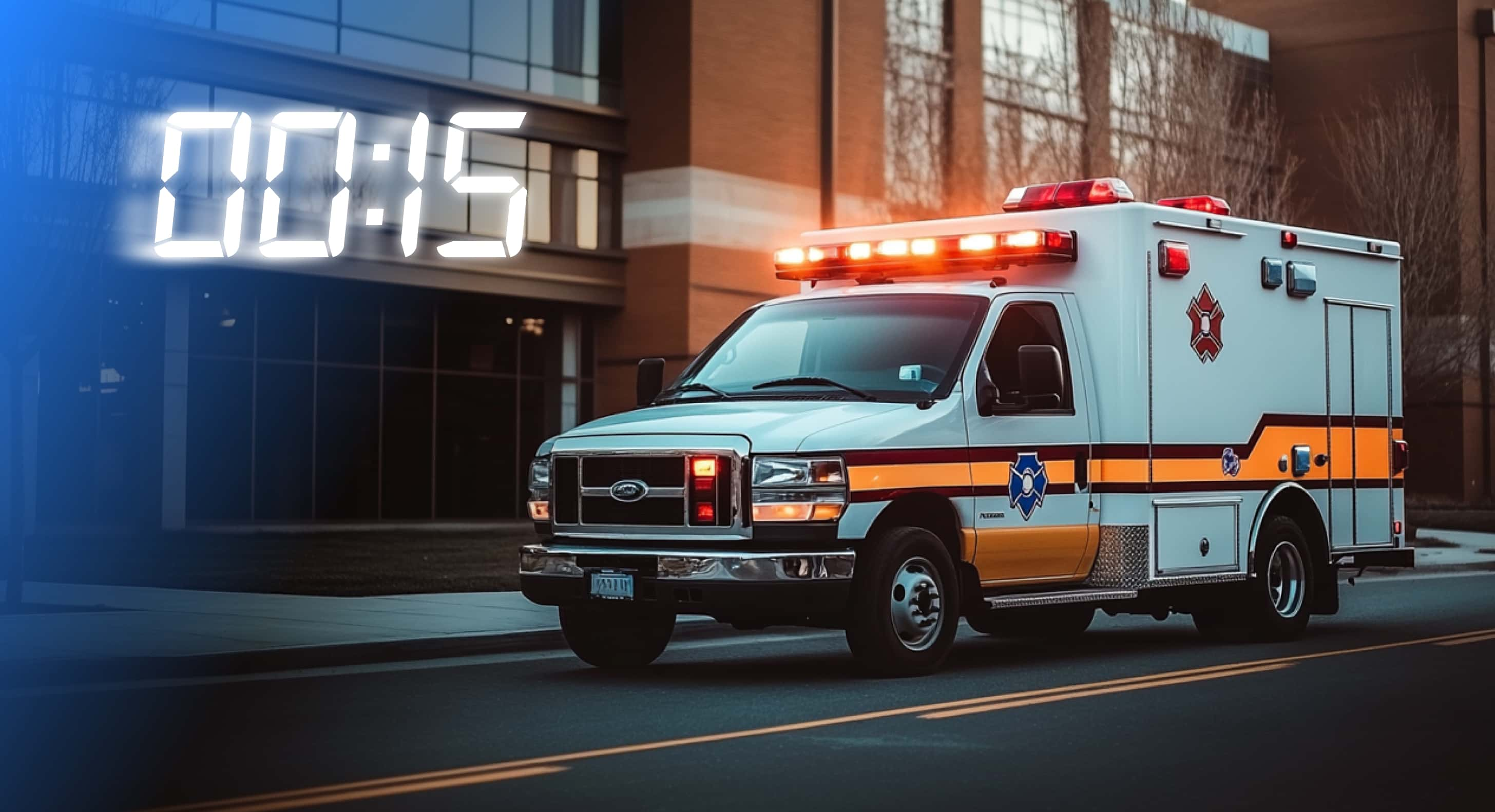In an era where school safety discussions often revolve around security threats, it's crucial not to overlook another vital aspect of student well-being: the rapid detection and response to medical emergencies.
As educational institutions strive to create safer environments, the implementation of advanced systems capable of identifying health crises has become increasingly important.
This article explores why detecting medical emergencies in schools is of paramount importance and how modern technology is revolutionizing this critical aspect of campus safety.
The Reality of Medical Emergencies in Schools
Schools are microcosms of society, housing hundreds or thousands of individuals daily. With such a concentration of people, medical emergencies are not just possible; they're inevitable. These can range from minor injuries to life-threatening conditions such as:
- Asthma attacks
- Allergic reactions
- Seizures
- Cardiac events
- Diabetic emergencies
- Falls and injuries
- Heat-related illnesses
The frequency and potential severity of these incidents underscore the need for robust detection and response systems within educational settings.

The Importance of Rapid Response
When it comes to medical emergencies, time is often the most critical factor. The difference between a positive outcome and a tragedy can be measured in minutes or even seconds. Consider the following scenarios:
- Asthma Attacks: Quick administration of medication can prevent a severe attack from becoming life-threatening.
- Cardiac Events: Immediate CPR and defibrillation significantly increase survival rates.
- Allergic Reactions: Prompt use of epinephrine can halt a potentially fatal anaphylactic reaction.
In each of these cases, the speed of detection and response plays a crucial role in the outcome. Traditional methods of identifying emergencies, such as relying on other students to report incidents or waiting for routine checks by staff, may result in dangerous delays.
Learn how real public schools have implemented VOLT AI.
Challenges in Traditional Emergency Detection
Schools face several challenges when it comes to detecting and responding to medical emergencies:
- Limited Staff Resources: With high student-to-staff ratios, it's impossible for personnel to monitor every area constantly.
- Hidden Incidents: Emergencies can occur in less frequented areas or when a student is alone.
- Delayed Reporting: Students may hesitate to report emergencies due to fear or uncertainty.
- Recognition of Symptoms: Non-medical staff may not immediately recognize the signs of a medical emergency.
These factors can lead to critical delays in providing necessary care, potentially exacerbating the medical condition and leading to more serious outcomes.

Read the Complete Guide: The Future of School Security in the Modern Era
The Role of Technology in Emergency Detection
Advancements in technology, particularly in AI-powered video surveillance systems, are transforming how schools approach medical emergency detection. These systems offer several key advantages:
1. Continuous Monitoring
AI-powered software for your surveillance cameras, like VOLT AI, can provide 24/7 surveillance of school premises, including areas that may not be frequently staffed. This ensures that no emergency goes unnoticed, regardless of where or when it occurs.
2. Rapid Alert Systems
When an emergency is detected, these systems can immediately alert relevant staff members through various channels, including mobile devices and smartwatches. This drastically reduces response times.
3. Behavior Analysis
Advanced AI algorithms can detect unusual behaviors that may indicate a medical emergency, such as a person falling down, and separate that behavior from someone who may be sitting or lounging.
4. Privacy-Preserving Monitoring
Solutions like VOLT AI can monitor for emergencies without compromising student privacy through techniques like facial blurring and behavior-focused analysis.
Real-World Impact: Case Studies
The implementation of advanced emergency detection systems has already shown promising results in educational settings:

The University
The University implemented VOLT’s AI-powered video surveillance system across 140+ critical security camera streams. One of the key features was "Person Down Detection," which proved invaluable in medical emergencies.
The system successfully alerted staff to a man who had fallen in an elevator lobby, allowing for immediate emergency management response.

Read the Case Study: How a Public High School Transformed School Security
Prescott High School, Arizona
Prescott High School's implementation of VOLT AI yielded impressive results in medical emergency response as well. The system's "Person Down Detection" feature identified a student suffering an asthma attack in an empty hallway, enabling a nurse to respond within 15 seconds.
Principal Adam Neely noted that this proactive approach allowed the school to be "out ahead of things that are happening" rather than constantly reacting to incidents after the fact.
Benefits Beyond Immediate Response
While the primary goal of medical emergency detection systems is to ensure rapid response to acute situations, their benefits extend far beyond this:
1. Improved Overall Safety Culture
The presence of such systems fosters a culture of safety and preparedness among students and staff. Knowing that help is always available can reduce anxiety and create a more secure learning environment.
2. Data-Driven Health Policies
By tracking and analyzing emergency incidents, schools can identify patterns and implement targeted health and safety policies. For example, if several students experience heat-related illnesses, the school might revise its policies on outdoor activities during hot weather or could recognize areas where students regularly sustain injuries as dangerous.
3. Resource Optimization
Automated detection systems allow schools to deploy their medical and security resources more efficiently. Staff can focus on their primary duties, knowing that the AI system is constantly monitoring for emergencies.
4. Legal and Ethical Considerations
Schools have a legal and ethical duty to ensure student safety. Advanced detection systems help institutions fulfill this obligation by providing a higher standard of care and potentially reducing liability in emergency situations.
5. Parent and Community Trust
Implementing cutting-edge safety technology demonstrates a school's commitment to student well-being, which can enhance trust and satisfaction among parents and the broader community.

Implementing Medical Emergency Detection Systems
While the benefits of these systems are clear, successful implementation requires careful planning:
- Needs Assessment: Schools should evaluate their specific needs and challenges to determine the most appropriate system.
- Staff Training: Proper training ensures that staff can effectively use the system and respond to alerts.
- Integration with Existing Protocols: The new system should complement and enhance existing emergency response procedures.
- Privacy Considerations: Schools must balance the need for safety with student privacy rights, choosing systems that prioritize privacy preservation.
- Ongoing Evaluation: Regular assessments of the system's effectiveness can guide improvements and ensure it continues to meet the school's needs.
Conclusion
The importance of detecting medical emergencies in schools cannot be overstated. In an environment where every second counts, having systems in place that can quickly identify and alert staff to potential health crises is crucial.
AI-powered video surveillance and other advanced technologies offer a promising solution, typically only considered a method for weapon detection, but instead providing continuous monitoring for health incidents without compromising privacy.
By implementing these systems, schools not only enhance their ability to respond to acute emergencies but also create a safer, more secure environment that promotes student well-being and learning.
As we look to the future of education, it's clear that integrating smart, proactive safety measures will be key to ensuring that schools remain safe havens for learning and growth.
The investment in medical emergency detection systems is more than just an investment in technology – it's an investment in the health, safety, and future of our students. As educational institutions continue to evolve and adapt to new challenges, embracing these innovative solutions will be crucial in creating environments where students can thrive, secure in the knowledge that their well-being is always a top priority.


